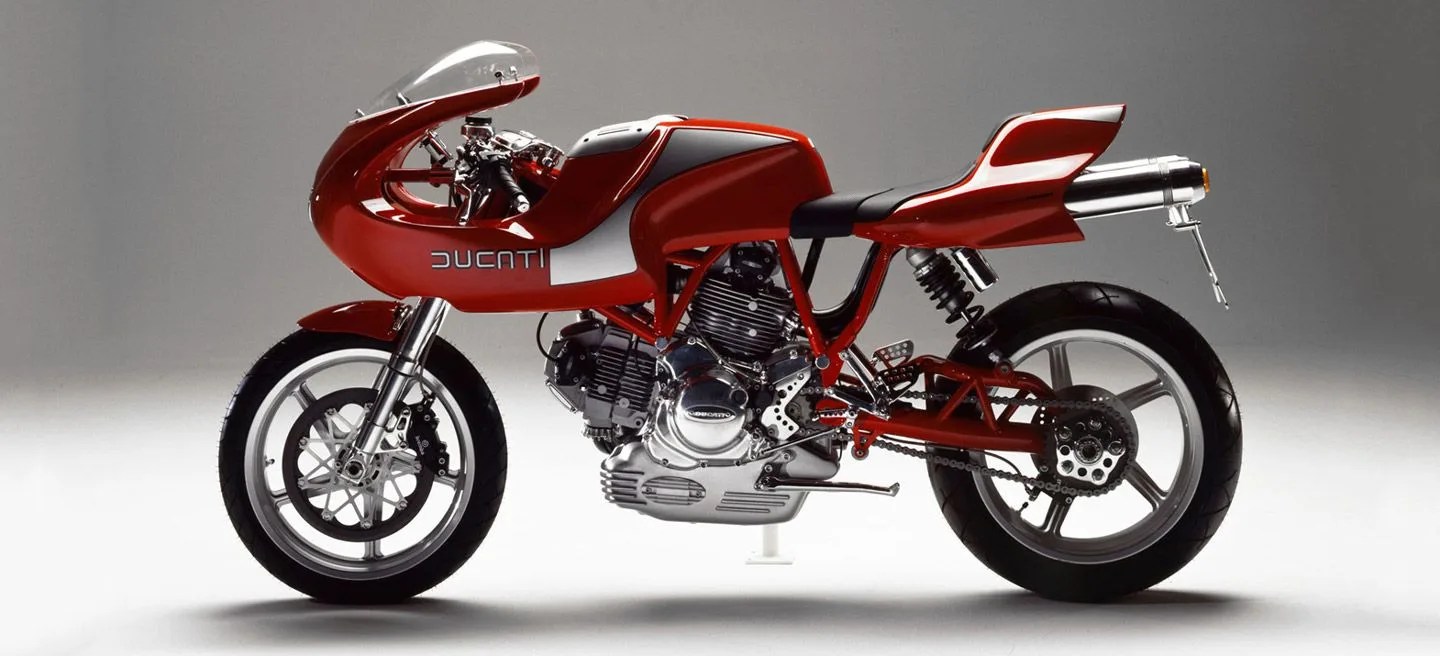To the untrained eye, a motorcycle is a motorcycle — two wheels, typically ridden by someone who likes to circumvent traffic laws just to get ahead. But to the riding cognoscenti and lovers of all things motoring, they are objects of power and beauty. There are a handful of motorcycles in history capable of not only capturing your eye, but stealing your breath. The bike that does this best is the resplendent Ducati MH900e. No motorcycle in history can claim a more comprehensive and artful execution of two-wheeled beauty. Ducati made a bold move in producing the MH900e, and the risk paid off in the creation of a legend.
MORE GORGEOUS WHEELS: 10 Modern Automotive Designs | Lancia Stratos | Mercedes-Benz CLA
Naturally, any bike fiend finds it hard to select the most stunning motorcycle ever made, especially with the dizzying array of motorcycles produced throughout history. And while vintage motorcycles hold a certain nostalgic mystique, there’s also beauty in the execution of modern engineering. The MH900e falls between the two, toeing the line between past and present.
While vintage motorcycles hold a certain nostalgic mystique, there’s also beauty in the execution of modern engineering.
The MH900e was the first in an illustrious group of Ducati’s famous SportClassic line of motorcycles that bowed at the 2003 Tokyo Motor Show. Created specifically with classic style in mind, they were modern bikes that paid homage to Ducati’s deep racing roots, and the MH900e demonstrated this best. The now-famous South African motorcycle designer, Pierre Terblanche, headed up the design of the MH900e, and both the bike and the MH900e’s nomenclature pay tribute to Mike Hailwood’s (MH) victorious 1978 Isle of Man TT bike — a Ducati 900SS with handsome rounded bikini fairing.
The MH900e played off a simple design intention. Terblanche focused on the bike’s 904cc air-cooled L-Twin engine with a 75 horsepower output, and worked to frame the engine with a bike deserving of the powertrain. Parking the engine within the glossy red trellis frame accentuated a crisp and simple beauty, with no question about the significance of the bike’s heritage of racing performance. Everything else about the MH900e’s appearance is gorgeous and speaks to its intended purpose: to win. The lines of a 1970s racer are unmitigated, from the silver-trimmed round headlight on the long fairing to the deeply sculpted fuel tank, the chunky tail section and integrated exhaust pipes. Finally, the classic red-and-white paint scheme that highlighted the dramatic flow of lines from the fairing to the back of the fuel tank is equal parts artwork and racing representation.
Ducati showed the original concept sketch of the motorcycle at the Intermot show for motorcycle manufacturers in Munich. The crowd was thrilled, even without an actual bike present. Then, after receiving even more enthusiastic responses from fans through an internet poll, Ducati gave the nod to a hand-built, limited-production run of 2,000 bikes between 2000 and 2001.
